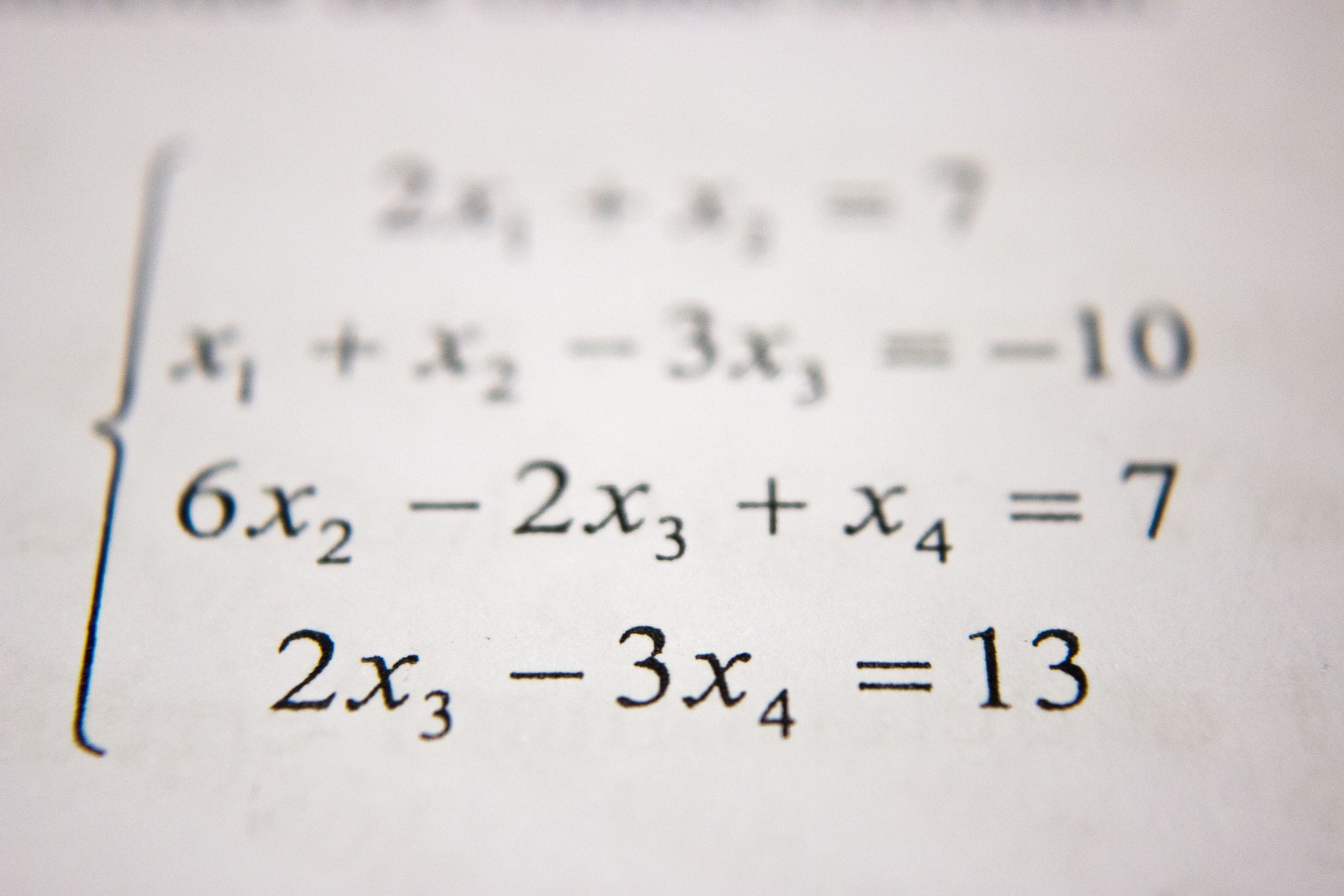Ready to kick mortgage mysteries to the curb? Calculating APR on a mortgage might seem like trying to decipher a financial riddle wrapped in a math puzzle inside an enigma, but trust me—it’s not as intimidating as it sounds. Whether you’re eyeing your first home or just fascinated about the numbers behind your loan, learning how to calculate APR can empower you to make smarter financial decisions. Let’s break down the jargon, crunch some numbers, and sprinkle in some real-world insights so you can decode the APR puzzle like a financial superstar.
How to Calculate APR on a Mortgage Table of Contents
Understanding APR on a Mortgage
Why APR Matters: The Real-World Impact
Breaking Down the Components of APR
Step-by-Step Guide to Calculating APR
Tools and Resources for Calculating APR
Common Pitfalls and Misconceptions
Expert Tips and Tricks for Better Mortgage Decisions
Real-World Examples: APR in Action
Resources and Community Support: Your Next Steps
Your Path to Financial Empowerment: Calculating APR with Confidence
Understanding APR on a Mortgage
APR stands for Annual Percentage Rate, and it’s more than just a mysterious number that lenders throw around. Think of APR as the full deck of your mortgage’s financial details rolled into one neat, yearly percentage. Unlike the interest rate—which only tells one part of the story—APR includes not only the basic interest rate but also the fees and other costs associated with your loan. In other words, APR is like your mortgage’s “all-inclusive package” tag, revealing the true cost of borrowing.
The interest rate is the cost you pay annually to borrow money, but it doesn’t tell you about the additional fees such as closing costs, mortgage insurance, and points. APR, however, factors in these extras, giving you an honest-to-goodness view of what you’re truly paying over the life of the loan. So, if you’re comparing two mortgage offers with different hidden fees, APR can be your best friend in deciding which deal is actually better.
For Millennials and Gen Zers on a quest for financial independence, understanding the ins and outs of APR is key to not getting burned by sneaky fees. It’s like comparing the real price tag on your favorite pair of kicks—you need to know exactly what you’re paying before you commit.
Why APR Matters: The Real-World Impact
Imagine shopping online and only knowing the base price of an item, without any insight into shipping, taxes, or hidden fees until checkout. That’s essentially what choosing a mortgage without understanding APR is like. APR gives you the big picture, allowing you to see how much your loan will actually cost over time.
The real-world impact of APR is huge. A mortgage with a slightly lower interest rate might sound appealing at first, but if it comes packaged with high fees, the APR might end up being significantly higher than a competing offer. By comparing APRs, you can avoid unpleasant surprises down the road and make a more informed decision about your financial future.
Additionally, APR helps demystify the true cost of homeownership. Whether you’re planning on staying in your home for a decade or just a few years, a better grasp of your APR could save you thousands of dollars in interest and fees. And let’s be honest—saving money for that epic first vacation or to boost your emergency fund is always a win.
Breaking Down the Components of APR
Calculating APR is not just about looking at the interest rate. It’s like baking a cake—while the interest rate might be the flour, the APR recipe includes sugar, eggs, and all sorts of spices. Here’s what typically goes into the mix:
- Interest Rate: The base percentage charged annually for borrowing money.
- Points: These are upfront fees paid to lower your interest rate—a bit like tipping your barista to get a better cup of coffee, only in mortgage terms.
- Closing Costs: Fees associated with processing the mortgage, including appraisal fees, title insurance, and attorney fees. They’re like the checkout fees at your favorite online store.
- Mortgage Insurance: If your down payment is below 20%, lenders might require mortgage insurance, adding an extra layer of cost to your APR.
- Other Fees: This may include underwriting fees, document preparation fees, and other miscellaneous charges that can sneak their way into your loan estimate.
When you add all these components together and convert them into an annualized percentage, you get your mortgage’s APR. This means that when you’re comparing two loan offers, even if one has a lower interest rate, the APR can reveal hidden costs that tip the scales.
Understanding these components helps you see past the surface and really understand what you’re committing to. It’s like having X-ray vision for your finances, allowing you to dissect every component of your mortgage deal.
Step-by-Step Guide to Calculating APR
Calculating APR might sound daunting, but breaking it down step-by-step makes it much more approachable. Here’s how you can crunch the numbers like a pro:
Step 1: Gather All the Details
Start by collecting all the necessary information:
- The nominal interest rate (the base rate).
- The total amount of the loan (principal).
- The fees and additional costs (points, closing costs, mortgage insurance, etc.).
- The term of the loan (e.g., 30 years, 15 years).
Think of this step as collecting all the ingredients before you bake your financial cake.
Step 2: Calculate the Total Finance Charges
Add up all the additional costs and fees that come with your mortgage. These finance charges include points, closing costs, and any other fees that are rolled into your loan.
For example: If your points total $2,000, your closing costs are $3,000, and there’s an additional fee of $500, then your total finance charges equal $5,500.
Step 3: Determine the Loan Amount and the Term
Identify the total amount borrowed and the exact term of the mortgage. This information is key for the next step in translating your total costs into an annual percentage.
Step 4: Use the APR Formula or a Calculator
The basic idea behind the APR calculation is to figure out what annual rate would yield the same monthly payment, given not only the loan’s interest but also the finance charges. While the exact formula can get a bit intricate (often requiring solving for the rate in an amortization formula), many online APR calculators can do the heavy lifting for you.
If you’re up for a challenge, the core formula underlying APR is similar to this:
APR ≈ (Total Interest + Finance Charges / Loan Amount) / Loan Term (in Years)
Keep in mind that this simplified version doesn’t account for the nuances of monthly compounding, but it provides a good starting point. For precise results, using a dedicated mortgage APR calculator is recommended.
Step 5: Compare Your Calculated APRs
Once you’ve calculated the APRs for your mortgage options (or obtained them from your lender), compare them side-by-side. This comparison will help you identify which loan truly offers the best deal over the long haul.
Remember, a lower APR usually means lower overall costs, but make sure to consider your specific financial situation and how long you plan to hold the mortgage.
By following these steps, you can demystify the process of calculating APR, ensuring that you don’t get blindsided by hidden fees and extra costs. It’s all about empowering yourself with clarity and confidence in your mortgage decisions.
Tools and Resources for Calculating APR
While the manual calculation of APR helps you understand the nuts and bolts, leveraging online tools and resources can save you time and further ensure accuracy. Here’s a roundup of trusty resources to check out:
Online Mortgage Calculators
Websites like Bankrate, NerdWallet, and Zillow offer mortgage calculators that include APR calculations. Simply input your loan details and fees, and these platforms will compute the APR for you—no math degree required!
Financial Apps and Spreadsheets
Many apps designed for budgeting and financial planning now feature mortgage calculators that include APR. Additionally, customizable spreadsheet templates (using Excel, Google Sheets, or similar platforms) let you play with different scenarios to see how changes in fees or interest rates affect your APR.
Consulting with Financial Advisors
If all else fails or if you find yourself tangled up in numbers, consider consulting with a financial advisor. A chat with a professional can provide personalized insights and help clarify any lingering questions about your mortgage options.
Using these tools and resources not only makes APR calculations easier but also puts a wealth of knowledge and expertise at your fingertips—helping you become a more informed borrower.
Common Pitfalls and Misconceptions
When it comes to mortgage APR, many myths and misconceptions have a way of muddying the waters. Let’s clear up some of the most common pitfalls:
The Interest Rate vs. APR Confusion
One of the biggest misunderstandings is assuming that the interest rate tells the whole story. While the interest rate is important, it only represents part of the equation. APR includes fees and other costs, making it a more accurate measure of the true cost of your mortgage.
Underestimating the Impact of Fees
Some borrowers overlook the significance of fees and closing costs, believing they’re minimal or negligible. Even seemingly small fees can add up over time, especially when they’re compounded over the life of a 15- or 30-year loan.
Focusing Solely on Monthly Payments
It’s tempting to zero in on what your monthly payment will be, but that number doesn’t tell you everything. A lower monthly payment might result from a longer loan term or lower initial rates, but if the APR is higher, you could end up paying significantly more over time.
Overcomplicating the Math
While the formulas behind APR can be complex, don’t let that scare you away. The key is understanding the concept—knowing that fees, interest, and other costs need to be considered together in order to get a complete picture.
By being aware of these pitfalls and misconceptions, you can steer clear of common mistakes and make decisions that are truly aligned with your financial goals.
Expert Tips and Tricks for Better Mortgage Decisions
Navigating the mortgage market is a bit like scouting for the best deal on your favorite gadget. Here are some expert tips and tricks to ensure that you’re making the smartest mortgage decision possible:
Always Ask for a Loan Estimate
Lenders are required to provide a Loan Estimate, which breaks down the interest rate, fees, and other costs associated with your mortgage. Use this document as your roadmap for calculating APR and comparing offers.
Negotiate Where Possible
Don’t be afraid to negotiate. Many fees are not set in stone, and a little savvy negotiating can lead to lower costs and a more favorable APR.
Compare Multiple Offers
Rather than settling for the first offer that comes your way, shop around. Even if two loans seem similar, differences in fees and terms can have a significant impact on the APR and your overall cost.
Understand How the Loan Term Affects Your APR
Shorter loan terms generally come with lower interest rates, but your monthly payments might be higher. Evaluate your long-term financial plan and understand how the loan term could affect not only your APR but your overall financial health.
Use APR as One of Multiple Decision Points
While APR is indispensable for understanding the true cost of your mortgage, it’s not the only factor to consider. Evaluate other elements such as loan flexibility, customer service, and your own future plans when making a final decision.
With these tips in your arsenal, you’re better equipped to negotiate, compare, and ultimately choose a mortgage that best aligns with your financial dreams and realities.
Real-World Examples: APR in Action
Sometimes, the best way to understand a concept is to see it in action. Let’s dive into a few real-world examples that illustrate how APR affects your mortgage and how savvy borrowers can use this knowledge to their advantage.
Example 1: The Tale of Two Loans
Picture this: Loan A offers a 3.5% interest rate with minimal fees, while Loan B has a slightly lower interest rate at 3.3% but comes with several hidden fees that add up to a significant amount. At first glance, Loan B might seem more attractive due to its lower rate. However, when you calculate the APR for both loans, Loan A comes out on top because its true cost is lower over the life of the loan.
This scenario underscores the importance of comparing APRs rather than just interest rates. Lenders might lure you in with a low rate, but the APR will reveal if those attractive numbers come at a steep price.
Example 2: The Short-Term vs. Long-Term Perspective
Suppose you’re debating between a 15-year mortgage and a 30-year mortgage. The 15-year option might have a lower interest rate—a definite plus—but it also comes with higher monthly payments. If you plan to hold onto your home for a long time, the overall cost savings from the lower APR on a 15-year loan might be substantial. On the flip side, if you anticipate selling the house or refinancing soon, the 30-year option might work better despite a marginally higher APR because of the lower monthly payments.
These examples illustrate that context matters. APR is a powerful tool in your decision-making kit, but always weigh it against your long-term financial goals and personal circumstances.
Example 3: Hidden Fees in Disguise
Consider a scenario where you’re offered two nearly identical mortgage packages. However, one of them includes higher processing fees and additional charges for mortgage insurance. When you crunch the numbers, these extra fees inflate the APR, making the seemingly similar offer far less attractive. Without a comprehensive look at the APR, you might have overlooked these hidden costs.
Real-world examples like these reinforce the notion that a lower interest rate doesn’t automatically mean a lower overall cost. It takes a keen eye and a bit of number crunching to see the full financial picture.
Resources and Community Support: Your Next Steps
Now that you’re armed with the knowledge to calculate APR and understand its impact on your mortgage, what’s next? It’s time to harness this power and take action. Here are some resources and community support avenues to help you on your journey:
Mortgage Calculators and Financial Tools
Explore reputable online mortgage calculators like those offered by Bankrate, NerdWallet, or Zillow. These tools can help you input different scenarios and instantly see how changes in fees, interest rates, or loan terms affect your APR.
Educational Blogs, Podcasts, and Videos
Stay current by following financial blogs and YouTube channels dedicated to personal finance. Look for content that breaks down mortgage topics in a fun and relatable way—perfect for busy Millennials and Gen Zers who want to learn on the go.
Financial Advisors and Mortgage Specialists
If you’re feeling overwhelmed by the details, consider consulting a financial advisor or a mortgage specialist. Experts in the field can provide personalized advice and help you navigate the complexities of loan agreements while ensuring you understand every aspect of your APR.
Online Forums and Social Media Groups
Join communities such as Reddit’s r/personalfinance or Facebook groups dedicated to home buying. Sharing experiences, asking questions, and hearing success stories from others can boost your confidence and provide actionable insights.
By tapping into these resources, you not only enhance your knowledge but also join a network of individuals striving for better financial wellbeing. These communities are full of real-life advice, insider tips, and support from those who have been in your shoes.
Your Path to Financial Empowerment: Calculating APR with Confidence
Embracing the complexity of APR calculation can be a game-changer in your journey toward financial empowerment. Each number, fee, and percentage point tells a part of your mortgage story, and understanding these details in depth means you’re better equipped to make decisions that align with your life goals.
Imagine having the confidence to negotiate with lenders, armed with a clear grasp of what those APR numbers really mean, and knowing that every percentage point translates to significant monetary savings over time. Your newfound expertise serves not only as a shield against hidden fees and misleading offers but also opens the door to smarter investments in homeownership.
Whether you’re saving for a down payment on your first apartment, planning for a family home, or simply curious about optimizing your financial profile, understanding how to calculate APR is a foundational skill in modern personal finance. You now have the knowledge to look beyond the glossy interest rate advertisements and to peel back the layers until your true cost is revealed.
Take this information, apply it to your financial planning, and confidently navigate the mortgage landscape. Your journey to deciphering and leveraging APR is a step toward greater financial control, and every informed decision you make builds a stronger future.
Mortgage APR FAQs: Your Questions Answered
Here are some frequently asked questions to clear up any final doubts about calculating APR on a mortgage:
1. What exactly is APR and why is it important?
APR stands for Annual Percentage Rate. It’s important because it represents the total cost of borrowing, including the interest rate as well as all additional fees and charges, giving you a comprehensive view of your mortgage’s cost.
2. How does APR differ from the interest rate?
While the interest rate is the basic cost of borrowing, APR includes other fees such as closing costs, points, and mortgage insurance. This makes APR a more accurate reflection of the overall expense of the loan.
3. Can I calculate APR on my own?
Yes, you can calculate APR by gathering all the relevant costs, including fees and the interest rate, and using the appropriate formula or an online calculator to determine the annual percentage rate.
4. Why might two loans with similar interest rates have different APRs?
Two loans might have similar interest rates because one could have higher fees and additional costs than the other, which would result in a higher APR for that loan.
5. How do closing costs affect my APR?
Closing costs are included in the APR calculation, so higher closing costs will generally increase the APR, reflecting a higher overall cost of the mortgage.
6. Are online APR calculators reliable?
Yes, reputable online APR calculators are reliable and can save you time. However, always double-check the figures provided by your lender and consult a financial advisor if you’re unsure.
7. Can negotiating fees lower my APR?
Absolutely! Negotiating lower fees or shopping around for better deals can help reduce your APR and save you money over the life of the loan.
8. Is APR the only factor I should consider when choosing a mortgage?
Not at all. While APR is crucial for understanding the true cost of your mortgage, you should also consider factors like loan term, flexibility, customer service, and your personal financial goals.
9. How often should I review my mortgage’s APR?
It’s a good idea to review your APR periodically, especially if you’re considering refinancing or if new fees arise. Being proactive helps you stay informed about the true cost of your loan.
10. Can mortgage APR change over time?
For fixed-rate mortgages, the APR generally remains constant; however, for adjustable-rate mortgages (ARMs), the APR can fluctuate over time based on changes in the interest rate and associated fees.
Empowering Your Future with Financial Savvy
Congratulations! You’ve journeyed through the complexities of APR on a mortgage and emerged with a clearer, more confident understanding of how it shapes your financial future. Armed with this knowledge, you’re not just a borrower—you’re a savvy financial decision-maker. Whether you’re preparing to make one of life’s biggest investments, scouting for a new deal, or simply broadening your financial horizons, being able to calculate and understand APR puts you in the driver’s seat.
As you move forward, remember that every percentage point and fee detail counts towards building a mortgage plan that works for you. Stay curious, ask questions, and continue learning from the wealth of online resources, expert advice, and community interactions available to you. Financial empowerment is about making choices that align with your lifestyle, goals, and dreams.
So go ahead—dive into mortgage offers, compare APRs like a pro, and negotiate for the best deal possible. With diligence, a bit of number crunching, and a clear understanding of the true costs behind your loan, you’re well on your way to making informed decisions that pave the way for a secure financial future.
Your journey to financial savvy begins now. Embrace every step with confidence, and let your understanding of APR empower you to turn your mortgage decisions into smart, strategic moves that propel you toward your dreams. Happy home hunting and smart borrowing!













